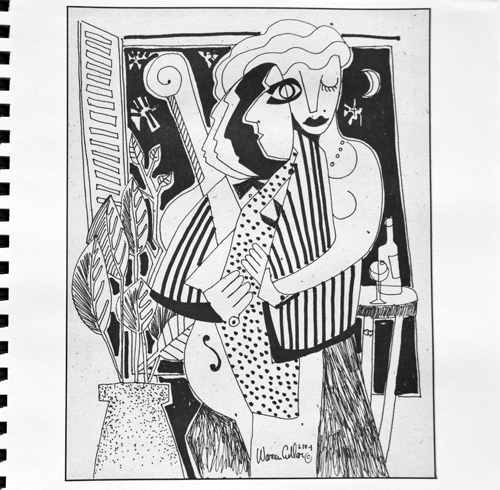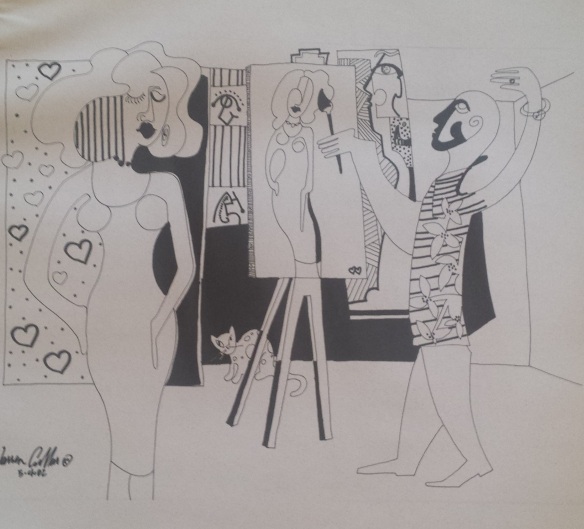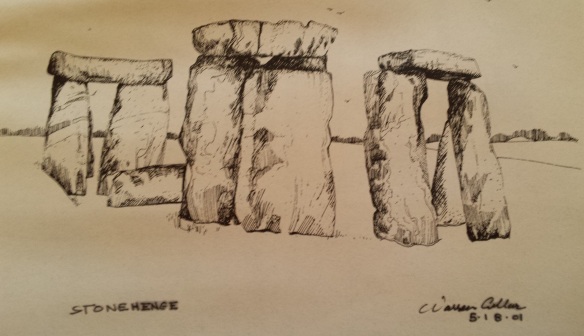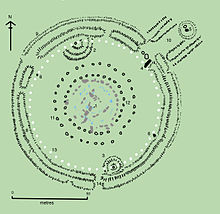Last week we put the image of “Base Romance”, a sketch from the book, Sketch Book published in 2004 with 70 sketches and the stories associated with each sketch. This week Warren shares some of his insights concerning the drawing of “Base Romance” and images of art works created from the same idea.
The Journey of a Sketch
“Base Romance” was drawn 1/10/2001 with an ink pen. I don’t remember the exact experience that triggered the idea. My best guess? The drawing was created on a cruise ship in a jazz bar, watching a couple sharing a glass of wine before dinner. A string quartet was playing quiet jazz. I was listening, observing the patrons and enjoying my glass of Merlot. I was also drawing, always drawing.
Perhaps it was my third or fourth cruise since our marriage on Valentine’s Day 1999. I had to be talked into my first cruise, but after one week in the Caribbean I was captivated by the entire experience. My idea of traveling before I was married to Kitty was joining expeditions as an artist. I would carry a back pack, with a sketch book, board a plane and arrive in some remote part of the world. The food was strange, water undrinkable and the natives were more than restless. Accommodations were a hammock strung under a thatched hut complete with bugs. It seemed the weather was always hot or rainy, or both.
This ust’a be “adventure artist” sipped his wine, remembering a dig in a cave on an archaeological expedition on Easter Island, looking for the remains of the early Rapa Nui people. Or in the jungles of Northern Brazil for a month, on a ethnomusicologist team to film a documentary of a folk festival among the natives of Northern Brazil. The music there was made with boa skin drums, rattles and vocals. I am dressed in my tuxedo, relaxing in the comfort of “my” cruise ship, and drawing. A gentleman in a bow-tie and not dressed in a loin cloth and carrying blow-gun, asked me if I would like another glass of Merlot.
A year after I drew the “Base Romance” sketch, I transferred the drawing to fit a copper plate and produced a soft ground etching in black printing ink, finished in watercolor. A couple of years later, I used the same idea painting a 60” x 40’’ canvas in acrylic. I liked the painting and decided to hold off putting it up for sale. In my sculpture studio in 2005, I created a clay relief of the same motif, made a mold and the piece was cast in bronze and aluminum. A year ago the Pecan Street Association asked me to use one of my paintings for their spring poster. “Base Romance” was chosen, so the journey of the sketch of “Base Romance” goes on.
Painting
Relief Sculpture

Poster
Thanks for reading; I would appreciate your comments. Warren












